#seven dolours
Text
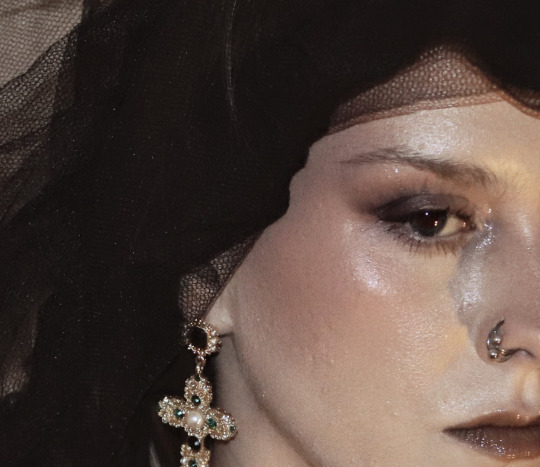
Lady of Sorrows shoot
#lady of sorrows#photography#mater dolorosa#fashion#makeup#aesthetic#religious#our lady of dolours#the sorrowful mother#our lady of piety#lady of the seven sorrows#eye#pz#me#mine#art#fine art#veil#cross#religious themes#paizleyrayz
88 notes
·
View notes
Text
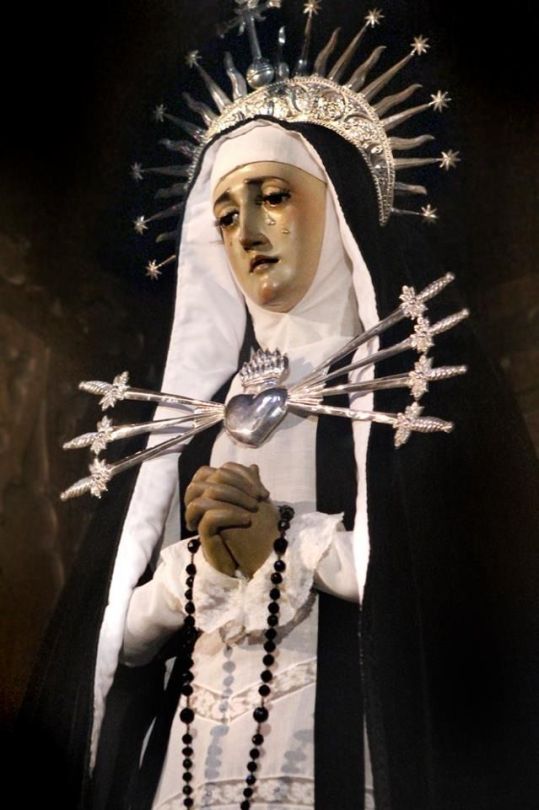
The statue of Our Lady of Seven Dolours in the church of Santa Cruz in Madrid, Spain.
0 notes
Text
The Catholic Virgin Mary: Mary as the Model Christian
“Because she was defined as being uniquely close to God and one who had shown herself capable of freely choosing to do God’s will, the Catholic Mary was held up as the prime exemplar of Christian faith. Catholics believed that Mary’s faith was evident throughout the gospels. They were sure that her mere presence at the wedding at Cana was due to her faithfulness to her son’s mission, and when the hosts ran out of wine her faith was displayed in her ‘humble yet fearless confidence in the power and readiness of Jesus to supply the lack’.
Catholics found contemporary praise for Mary in the unnamed woman who called out to Jesus, ‘Blessed is the womb that bore thee, and the paps that gave thee suck.’ Jesus deflected the praise, saying, ‘Yea rather, blessed are they that hear the word of God, and keep it.’ However, Catholics turned Jesus’ apparent rebuke to Mary’s advantage, arguing that Jesus had not denied the worth of Mary’s motherhood, but had only praised her faith more than her maternity. Jesus had acknowledged, Williams contended, only that ‘it was by the faith of the Blessed Virgin that our Incarnate Lord was to be born of her’.
Roman Catholics even transformed that praise into a prayer: ‘Blessed is the womb of the Virgin Mary, that bore the Son of the eternal Father. And blessed are the paps that gave suck to Christ our Lord.’ A key component of the feminine ideal was the belief that women were more spiritual than men. The Virgin Mary, already the exemplar of female piety in Catholic discourse, was enlisted to serve as a model of female behaviour.
…the Catholic Mary modelled the sort of behaviour that conduct manuals constantly urged on Victorian girls and women. She could also serve as a model of maternal religious behaviour. Scandalised by the ‘extremely negligent’ mothers who allowed their children ‘to wander from home without necessity, to amuse themselves in public streets, to play in bye-ways and roads, in a word, to do just as their whims suggest’, Father Sebastian urged the women who read his Manual of devotions in honour of the seven dolours of the Blessed Virgin Mary: ‘Imitate the example of the Blessed Virgin; she, like a prudent and virtuous parent, took to the Temple whilst very young her Divine Son Jesus; she did so, as you have seen, for your particular instruction.’
In these ways the Catholic Virgin Mary could seem like the type of woman who was frequently praised by Victorian commentators: she was a cheerful helper whose responsibilities were domestic and religious. However, a woman’s sphere of action was usually limited to her own family or, at most, her own community. This was generally true even after the 1860s, when women were urged, in exhortations such as John Ruskin’s popular lecture ‘Of Queens’ Gardens’, to apply their domestic virtues to the outside world.
Even in those representations of female influence, women were never envisioned as competitors to men. The Catholic Virgin Mary, however, was given no such limitations, for her sphere became the entire world when Catholics described her as being the mother of all believers. The scriptural basis for that belief was Jesus’ assigning his mother and his favourite disciple into each other’s care just before he died.
Phillips de Lisle explained that ‘by bearing him she became entitled spiritually to be the mother of all the elect; for they are the mystical members of Christ, and they are also called in scripture his brethren: so that the church interprets our Lord’s words on the cross, wherein he commanded St John to look upon Mary as his mother, as addressed to all the elect’. This traditional belief had been maintained by recusants, but in the Victorian era it became more popular and was even adopted by some advanced Anglicans.
In ‘Mother out of sight’, Keble urged Christians to turn to Mary, ‘[o]ur own, our only Mother’,142 while Shipley found evidence for this trope in the traditional parallel between Mary and Eve: ‘If we say that the latter is the Mother of all sinners, because of her consent to sin, so we must say that our Lady is the Mother of the righteous, through her consent to the Incarnation.’ Lay orders such as the Confraternity of the Scapular of Mount Carmel and sodalities like the Children of Mary encouraged Roman Catholics to think of Mary as a protective mother.
…Catholics further expanded Mary’s sphere of action when they posited her as a model for male as well as female behaviour. Although Protestants frequently complained that the Catholic Virgin Mary stood between the divine and the devout, there was a strain of Catholic thinking which said that believers who imaginatively experienced what Mary experienced would become closer to God. Thus Catholic men as well as women were told to imagine Mary’s experiences in their prayers.
…the Catholic Mary did not merely uphold existing gender boundaries: she also undermined those boundaries, which many Victorians struggled so hard to maintain, when she was enlisted in the project to urge men to imagine the experience of pregnancy. Furthermore, the celebration of her pregnancy as a creative endeavour that all Christians should imagine for their spiritual profit severed pregnancy from its traditional associations with nature and in opposition to masculine reason.
Instead, pregnancy was re-imagined in this case as something creative and desirable. The Catholic Virgin Mary was never merely a promoter of those feminine virtues that restricted women to the domestic sphere: she could also undermine the theory of separate spheres that supported the feminine ideal.”
- Carol Engelhardt Herringer, “The Catholic Virgin Mary.” in Victorians and the Virgin Mary: Religion and Gender in England 1830-1885
14 notes
·
View notes
Photo

#FolkloreThursday: Part 2/3: Memorial of Our Lady of Sorrows (September 15) Five years later, they took up the sorrows of Mary, standing under the Cross, as the principal devotion of their order. Over the centuries several devotions, and even orders, arose around meditation on Mary's Sorrows in particular. The Servites developed the three most common devotions to Our Lady's Sorrows, namely the Rosary of the Seven Sorrows, the Black Scapular of the Seven Dolours of Mary and the Novena to Our Sorrowful Mother. The rosary consists of a chaplet of seven septets of beads (upon which is said an Ave), separated by one bead (on which is prayed a Pater Noster. Meditations for each dolor were composed by Pope Pius VII in 1818. The Black Scapular is a symbol of the Confraternity of Our Lady of Sorrows, which is associated with the Servite Order. Most devotional scapulars have requirements regarding ornamentation or design. The devotion of the Black Scapular requires only that it be made of black woollen cloth. From the National Shrine of Saint Peregrine spread the Sorrowful Mother Novena, the core of which is the Via Matris.The core of the prayers in the novena is the Via Matris. #folklorethursday #mamamary #mothermary #ourladyofsorrows #holymother #catholique #catholiques #romancatholic #romancatholicchurch #catholicmystics #catholicworld #intothemystic #catholic #catholicism #materdolorosa #Spiritique #mindfulness #Spiritual #Spirituality #mystical #mystique #mystic #mysticisim #renaissance #renaissanceart #folk #folklore #folkspirits #folkmystic https://www.instagram.com/p/Cih8saxJfyn/?igshid=NGJjMDIxMWI=
#folklorethursday#mamamary#mothermary#ourladyofsorrows#holymother#catholique#catholiques#romancatholic#romancatholicchurch#catholicmystics#catholicworld#intothemystic#catholic#catholicism#materdolorosa#spiritique#mindfulness#spiritual#spirituality#mystical#mystique#mystic#mysticisim#renaissance#renaissanceart#folk#folklore#folkspirits#folkmystic
7 notes
·
View notes
Text

In the first ages, during the night before every feast, a vigil was kept.
In the evening, the faithful assembled in the place or church where the feast was to be celebrated.
They prepared themselves by prayers, readings from Holy Writ (now the Offices of Vespers and Matins), and hearing a sermon.
On such occasions, as on fast days in general, Mass also was celebrated in the evening, before the Vespers of the following day.
Towards morning, the people dispersed to the streets and houses near the church to wait for the solemn services of the forenoon.
This vigil was a regular institution of Christian life. It was defended and highly recommended by St. Augustine and St. Jerome (see Pleithner, "Aeltere Geschichte des Breviergebetes", pp. 223 sq.).
The morning intermission gave rise to grave abuses. The people caroused and danced in the streets and halls around the church (Durandus, "Rat. Div. off.", VI, 7).
St. Jerome speaks of these improprieties (Epist. ad Ripuarium).
The Synod of Seligenstadt (1022) mentions vigils on the eves of Christmas, Epiphany, the feast of the Apostles, the Assumption of Mary, St. Laurence, and All Saints, besides the fast of two weeks before the Nativity of St. John.
After the eleventh century, the fast, Office and Mass of the nocturnal vigil were transferred on the day before the feast.
Even now (1909), the liturgy of the Holy Saturday (vigil of Easter) shows in all its parts that, originally, it was not kept on the morning of Saturday but during Easter Night.
The day before the feast was henceforth called vigil.
A similar celebration before the high feast also exists in the Orthodox (Greek) Church. It is called pannychis or hagrypnia.
In the Occident, only the older feasts have vigils. Even the feasts of the first class introduced after the thirteenth century (Corpus Christi, the Sacred Heart) have no vigils, except the Immaculate Conception, which Pope Leo XIII (30 November 1879) singled out for this distinction.
The number of vigils in the Roman Calendar besides Holy Saturday is seventeen:
eves of Christmas, the Epiphany, the Ascension, Pentecost, the Immaculate Conception, the Assumption, the eight feasts of the Apostles, St. John the Baptist, St. Laurence, and All Saints.
Some dioceses and religious orders have particular vigils:
the Servites, on the Saturday next before the feast of the Seven Dolours of Our Lady; the Carmelites, on the eve of the feast of Mount Carmel.
In the United States, only four of theses vigils are feast days:
vigils of Christmas, Pentecost, the Assumption, and All Saints.
3 notes
·
View notes
Text
52: Marianne Faithfull // Broken English

Broken English
Marianne Faithfull
1979, Island
Broken English is the best album you can get for $5 at any used record store in North America. I can guess why that might be—that sweet spot of having sold well enough to be well-circulated in its day, but lacking that recognizable hit that perennially re-introduces it to new generations through adverts and soundtrack licensing. (Though I would love it if “Why’d Ya Do It” had a moment on Tik Tok.) Still, in an era where the work of female artists is under intense reconsideration, I’m surprised there hasn’t been more of a move to give the 76-year-old Faithfull her due for this singular testament to resilience.
Broken English is the ideal of ‘living well is the best revenge’ in action, though of course Faithfull had famously not been living very well in the years prior to its release. Like Marilyn Monroe, there was something unique about her appearance-affect that breathed the word “money” in that coded language ambitious men in the entertainment business speak. In an industry with no shortage of blondes with husky voices, producer after producer made the effort to pick Marianne up from whatever hotel room or Blitz-ravaged squat her last go-round with fame had left her in because she had an indefinable it.
Though she never had the vocal power of a Dusty Springfield, she was no blank muse for boyfriend Mick Jagger or the Stones’ conniving ‘60s manager Andrew Loog Oldham either. Few if any of her teen idol peers of either sex could’ve evoked the fever-weak dolour and vampiric yearning she brings to her 1969 version of “Sister Morphine,” including Jagger. By the time she was ‘rediscovered’ in 1978 by guitarist (and subsequent long-time song-writing partner) Barry Reynolds and Chris Blackwell of Island Records, years of abuse had reduced her voice to a scabrous caw. On the re-recording of “Sister Morphine” cut during the Broken English sessions (but relegated to a B-side), she sounds like she’s been writhing in that same hospital bed a long time indeed.
youtube
Lurid as the details may appear from the outside, the cycles of addiction and rehab and relapse can be fatally tedious for a person with any brains, and you don’t survive them without developing a certain gallows humour. Chainsmoking in the blue shadows, on Broken English Faithfull observes Cold War brinksmanship, domestic alienation, and the hustle for a fix with the same crooked smile. Her wracked new voice makes each performance grippingly personal, though only about half the lyrics came from her own pen. She’s aided by superb production and performances. In the late ‘70s, every label tried to squeeze a little extra mileage out of their rust-bitten pop stars by slapping on a disco or new wave paintjob, usually to embarrassing results. But the rhythmic tension and chilly synthesizers of new wave fit Faithfull perfectly, perhaps because she had so recently lived the industrial British squalor that was in the process of birthing post-punk.
On the blackly hilarious “Why’d Ya Do It” she acts both parts of a domestic incident for the ages, getting to play both a jilted woman’s tearful rage and the sour, sarcastic cocksmanship of a cheating man. The band could’ve chosen to read the tune as a dirge, but instead they serve up seven-minutes of irresistible, skanking rhythm, topped by a slithering lead guitar, organ, and sax. (The nearly nine-minute original mix proves they could’ve filled a whole side of vinyl with it as far as I’m concerned.) The combination of Faithfull’s nostalgic murmur and Steve Winwood’s glossy synths turn Dr. Hook’s “The Ballad of Lucy Jordan” into a Euro sci-fi dream, like an elderly woman forced to relive her own unsatisfied youth while she dies in a Holodeck.
youtube
If any song here is ripe for rediscovery by a pop audience, I’d put forth the crystalline ballad “Witches’ Song,” which could’ve been a Stevie Nicks-Christine McVie cowrite (it’s like “Rhiannon” crossed with “Everyday”). It feels like both an escapist fantasy and a nourishing statement of sisterhood, with a beguiling mysticism to its lyric: “Danger is great joy / Dark as bright as fire / Happy is our family / Lonely is our ward.” (Queue me making these noises.)
Broken English gave Marianne Faithfull’s career a new lease on life, and while she’s seldom seen quite the same level of critical or commercial attention since, she’s also been able to hang on to what she has this time. So, in that sense, it’s done plenty for her already—but as a record, I think it stands with the best music of its time, and I probably should’ve had to pay a bit more at the shop to take it home with me.
52/365
#marianne faithfull#broken english#island records#sister morphine#music review#vinyl record#the ballad of lucy jordan#mick jagger#'70s music#new wave#post punk
0 notes
Text
Seven Sorrows Rosary
The Rosary of the Seven Sorrows, or Chaplet of the Seven Dolours, is a devotion to Mary as the Sorrowful Mother that dates to the 13th century. It became quite popular in Europe during the ravages of the Black Plague.
There are several methods for praying this chaplet. This particular piece reflects my preferred approach to the devotion (and my aesthetic sense). It consists of seven segments of…

View On WordPress
0 notes
Text
From the night things faded between you and me I've been spending all my time thinking about what could have been of us if I had given you a different answer.
I've been rewinding that scene in my head wishing I wasn't there to watch your eyes uneffulgently staring at me as you were asking me to love you and asking me to stay, hell, I wish I had something to say.
I wish I didn't let my feeling sink in my past dolour and get lost in a tricked glimpse of a future that doesn't belong to us.
And seeing you there, in your knee, hoping me to be a runaway in a pirateship with you while noxious words were running through my mind and slipping through my tongue just to shatter you down was the worst kind of pain I could have ever felt in a lifetime, and it was the pain I created.
It's not like I wanted to see you hurting from the look on your face, but it's not like I was ready to jump on that rollercoaster with you, but it's also not like I didn't want to.
And you musn't understand it right now but if this is your chance of writing your story with somebody other than me, then grab it.
I won't ask you to wait, nor do I want you to.
So I'll park my car at the end of your street, sit there and watch proudly from afar you falling in love with someone else. And you'll see that you'll be so thankful for that "no" I said seven years ago.
And you'll find it. You'll find someone who will love you, trully. Someone who will live and die for you in a heartbeat, because you deserve that. You deserve someone as passionate, someone as special
You deserve someone who'll be able to love you... not me.
— Mariana Protasio, “You deserve someone to love you”.
1 note
·
View note
Text
Seven Dolors

Was this Jesus? I can’t believe it’s not Jesus, so it is Jesus. Were you not bound, bloodied, and wearing a crown of thorns?
If he flunked Mariology, would coach get him out of hot water? Are you there, Jesus? It’s me, Margaret. It’s me, Margarine. I can’t believe it’s not Jesus. All Gay, I Dream About Sects, Yes All Gay, I Dream About Sachs, Saks Fifth Avenue, Mr. Saxobeat by Alexandra Stan, and, not to mention it, but... fucking.
It wasn’t until he was out of football, away from the church, that he’d be on his knees groaning for a facial of cum, coating the brown bristles of his goatee white with the unholy spirit.
And you, great ape, with all your pain and pressure , could not understand or find the time to lengthily sympathise with a guy like me.
Seven Dolors for Mary, she who took on suffering so that we must not suffer, she who reveals that we must not waste these lives that God has given to us by wallowing in our pain and our own self-pity, and yet I manage to find so many more ways to be doloroso than seven.
I snivel for my own damaged collagen, my cysts and scars, my flawed complexion, my perennial farmer’s tan, my sun-damaged nose, my breakouts of cold sores, my acne and seborrheic derma-titus, my blepharitis, my unattended moles and skin tags, my wrinkles, the grey in my beard, my stringy, scanty fur, my astigmatism and nearsightedness. I ululate inside about my Potemkin village of a childhood, which in retrospect was about four makers of spoons, none which which knew how to craft a spoon or much of anything, waiting around for a rich old farmer and his wife to die. I thusly ululate over the silverback nature of those who must claim victory over a human by rearing up like silverbacks. A silverback does not care for a human that tries to get ahead. A silverback simply sits on it and eats its lunch. The patriarch has the patriarch’s favourite, the most alpha and heterosexual of its progeny, and there will be no consequences for the winners, for a gorilla has ten toes and an opposable big toe. Most shalt never know, or care, about the difference. If they were to detect even so much as the broader strokes of the differential, they would forgive it, and the troop would continue, unabated.
For you can work harder, work harder they say. Work harder, not smarter.
You must be set back into your place, pipsqueak, to know your place, and once detained and sent there, you must be told that you are meant to be running the race to bump off that lion, and why have you not done so yet, pipsqueak? You worthless and naughty pipsqueak! Were you ever a member of the pipsqueak club, those perpetually dramatic, malcontented girls who would swarm down through the halls of padlocked lockers like a tempest? Ripping each other’s hair out and attacking with their fingernails as they scream-squealed, you just leaned in closer to your locker. No, you didn’t even bother to learn the names of the girls in the club, did you?
The pipsqueak club had nicknames, and surnames, formal first names and abbreviated names of endearment, and you can’t remember a one of those names, can you? Michelle is always a safe bet, but is it a Michele with one L or two? Perhaps a Nichole or a Nicholle? You need two capital Ls to spell H-E Double Hockey Sticks. The shape of an L on his forehead and laughter as your cousin tears by, speeding off in his car with laughter, past the basement you were living in for two years, offering your assisted living services to two men in the community via a non-profit organisation.
It is verifiably.false, the antiquated notion that in order for there to be winners, there must be losers. Oprah’s studio audience knows, but let us not forget the stay-at-home audience and the global poor. Can we treat a planet of billions to ice cream?
But back to your lamentations, putrid pipsqueak, o ye, of little faith. For it’s your self-pity party, and you can cry if you want to, just like you were bummed out when a stuffed kangaroo arrived for your birthday instead of a real one. You wanted to see that strange offspring of a land mammal wriggle down into that pouch, grow up securely in it, and hop around your father’s backyard. He’d been a landscaper, and you had too, pipsqueak, for a much briefer while. You never did learn as much about the black pruning seal he sprayed on trees struck by lightning or plowed into by some neighbour kid on his bike, or the Plant Doctor fertilizer he’d put in a plastic cup on a stake, to which he attached the garden hose so that the nitrogen and nutrition could gradually be dispersed to the ground.
Your encrusting eye weeps for itself, just like you weep for whatever rot it is upon your upper back, the result of rarely showering, a reminder of your many personal failures. You, and, and he are all the same matter, pipsqueak, part of Gawd’s creation, part of the macromolecular make and model of the universe, and so the structural lines set aside are all just labyrinthine minuttiae. You’re minuintiae. I don’t know how to spell minutiae. Ah, there we go. You and Saint Mary’s 25 are His Play-Doh, hastily smooshed back into His containers.
His eyes weeps for itself as he keyups upon the MacBook Air, picking bugs off the skin of his ass as they try to crawl inside his red Express underwear. The band is black and red letters say Express. Is this the highway to hell? It’s raining bugs, hellelujah,,which is much different from the time you saw one of the Weather Girls sing this hit just as the storm began, only to later take home a quasi-closeted coastie living on Fraternity Row to your duplex, where the heartbeats of your Balance 014 double album by Joris Voorn provided him the excuse to decide you weren’t attractive enough to be worthy of his hookup after all, and thus, with a parting hug and his fake fear, you had to drive him all the way back again in your Toyota Corolla while using the opportunity to tell him about how dry cleaning chemicals poisoned the city’s water supply. He pretended to be extra horrified since pretending to be extra sensitive was his cop-out game that night. For you are just dogmeat, pipsqueak, never quite the right supple moisture and alluring scent these kitty cats deserve. They say men are like dogs, but a dog will eat anything. It’s not so easy to be eaten. Perhaps they are not hungry enough. Perhaps it’s the ribbon tape of the words and the pressure to muscularly flex in tight, sharp-coloured boxer briefs or some such, perhaps a jock strap, a mere strange of underwear thought, in our non-culture, to help you be able to distinguish the men from the boys.
Bugs are dancing on your laptop as you press them with your forefinger to kill them. Last night you quashed a good two dozen of them, often using an upside down water bottle. Anteayer, the day before yesterday, I'd say at least six plopped down from the ceiling last night onto my laptop alone. Of course they rain down onto me, too. At one point I had three bugs separately dancing on the caps of my three bottles of water, which all stood alone. Stuff like that would almost make me superstitious. What possesses a bug to climb all the way up a bottle of water, only to rear itself up onto its hind legs and dance for me? What possess three of them to do it at the same time?
What possesses a CEO to climb to the top of a skyscraper and don the Daddy Warbucks persona that is so in demand by the free hand of Adam Smith’s market? The wealth of nations is the question of the day. The anti-China and anti-USA hysteria is mostly about smug, jealous, and power-hungry crapola humans, who give zero fucks about helping Africa or fixing Brazil, S. Africa, India, Russia, etc., fighting for more power for themselves. That's why this chatter dominates. Money power China bad money money USA bad money power gimme USA gimme China bad money power China China China China China!! What a woild.
Seeing the problems, delineating and enumerating the, isn’t a solution, pipqueak. PIcking bugs off yourself, you would at least need a small stool en route to reach the most meagre pedestal, wouldn’t you? Now, if you had a body that could be an Instagram sensation, and the algos and the people liked you, you could be the leader of one million followers virtually overnight, and then start to spew your cray until a good tenth of them deleted you in fear, horror, and disgust, just like you’re disgusted by the bug that perched on your middle toe and reached for the sky from that vantage point. How paradoxical that the bugs rain from the ceiling only to seek out the toes and the water bottle caps as they dance for the sky? We’re all sky cultists, I guess. Gawd’s up there, the CEOs are up there, the politicians, the air force, the eagles and the vultures, both as bald as Daddy Warbucks himself. Don’t trust any entity unless you have to descend the stairs for it, perhaps, but then you’re going against the grain. Then you’re swimming downstream as all the other salmon swim upwards to spawn, and what will become of your seed then? Left to the Ravens of Dispersion, you idiot, that’s what will become of it. Caw Caw!
A bug bit you on the nutsack while you slept. The shit-caked walls in the village outside, in which a shit cake is made with Nandi’s shit, stacked so high, and his piss, His piss, by a child who’s eating Skittles with her other hand. The handprint on the shit cake makes it look like Sujata’s version of the hall outside a kindergarten classroom, caked on everything from the walls to the trees, only to be burned for fuel for shit fires at a later date. As for Sujata herself, she may have offered the Buddha rice and milk to snap him out of six years of asceticism, but it is not evident what is left of her other than the mound of a stupa. I like em big and stupa’d, I guess, but I was too fearful to tread around and wander inside it, not wanting to be... rude. Wanting to defer, respectfully, because the heat is aww-aww-awe-awe-awe-on, in the process turning yourself into a quiet, paralysed dolt who strangers find to be quite disrespectful in his apparent cluelessness. But you never could get it right, because the silverbacks got the long knives out for the tall poppies. You never made it to Eagle Scout, and one of them, a radio dj who ran a progressive radio talk show called Forward, even shamed you with a song written by a member of The Eagles. It was You Belong To the City, you villain, you shit-Scar with the scar permanently cracked into your forehead by your young brother’s baseball ball, you incus, you would choke on Glenn Frey, hopefully, and thusly eat dirt for daring to move to the big city Minneapolis. You’d learn. You’d pay. The apes would maintain their rightful place, including the metal and Metallica-loving silverback who warned you.
A bug again. It’s almost enough to make you think this village is cursed and that you are cursed, you, rotting in an orphanage, you who daddy does not love, you who cannot call her dad and he’ll stop it all, as, hardly for the first time, you watch the bugs as they climb the wall, even as you hate the aggressive arrogance of that song, even as you cashed the fifty-four hundred dollar check from living in a roach motel for years in the prime of your life, you who said you were going to Kolkata where it’s trashy because you were thrown away like trash, you who cries his self-pitying backpacker travel tears for his own meagre abodes, you who did not even manage to fail enough to lay claim to the glory of tragedy.
You are not very superstitious, but you must admit this is one hell of an unhealthy place.
The mice that scuttle about on the floor and the g -- excuse me, I just had to pick up a bug, roll it between my fingers, and toss it onto the floor -- the geckos that -- excuse me, I want to use my cell phone to look at the current state of my inflamed, pustulent eye, and to wipe a drop of snot from my nose and lick it -- the geckos is that... i forget and it doesn’t matter.
You who would never repent before Gawd, what are you sad about again, aside from the eye, the paltry food stocks you have in this crisis, a crisis you don’t even seem to believe you’re a part of because you think you’re just a naughty boy, a spoiled brat, a reckless monied mess, with one orange left and those nasty chips, Mast Masala Tomato Punch chips by Harshit, I shit you not, that’s the brand name... you’d just like a Culver’s Butter Burger, a double, even, but you’re not greedy, right, so a single is fine, isn’t it? Whichever you go for, you’re bound to regret not choosing the other option, just like your daddy. You’d like it with french fries, ketchup, and a large blueberry shake or malt, again, a matter of debate and the road not taken to be infinitely regretted.
The problem with the socialists is they don’t care about the poor, just socialism, per se. Harsh shit. The world often seems to balance itself out into a perfect hell, and would you expect it to be otherwise? Laura Ingraham has three adopted children and they’re bound to all be hellraisers. But there is a sort of bumble and stumble progress, bleak as it feels. You’re just a piece of shit who tends to look at the dark side and the problems, aren’t you? Good vibes, homely. Keats saw truth and beauty in a fucking urn, but at least he made it pretty, even as we now put the ashes in an urn and unrwap our Choco Treat by Sobisco. You were buying Rebisco donuts in Vietnam. The Nabisco logo, of course, traces back to the Cross of Lorraine, the circle topped with the two-bar cross, used in the First Crusade by the Knights Templar. You learned this from reading Barbarians at the Gate: the Fall of RJR Nabisco behind a retractable metal wall in a hostel in Kingston, Jamaica.
Oh yes, you sure have stories. And what for, puppet? Disneyboi? Derivative healthen? Useless piece of shit? Geppetto’s crippled son, if only Geppetto were a pig, just a fucking boar of a man, the one you said ate your future until he was twice the size of you, the one you said disgraced his own father’s funeral with his sow of a sister as he forced you to carry a cookie tray to the car for him, a cookie tray you said you’d gladly carry but you didn’t need to be snapped at, you didn’t have to hear his sister snort and laugh that we all accept you for your homosexuality, the implication that you’re just a piece of shit who wants free money, but we don’t all think alike, that’s just presumption that we all think like you, so fuck you you Potemkin village silverbacks, all fucking four of you, you think I’m intimidated by numbers, ha, I’m repulsed by numbers, the madness of a world gone apeshit and their power plays, so fucking putrid, and that’s all it is and nothing can break it, it seems, i will move to Japan, for everybody always acts like the collectivist termite mound is Japan or China but trust, the collective android asshole silverback-worshipping hostility infused shithole is much more in the USA, and the apes from my place de naissance and the whole surrounding thousands of miles are going apeshit because they cannot handle that humans are outstripping them, to them it’s an existential threat, and I hope it is, I hope the ape-o sapiens do go the way of the dinosaur over there, and I don’t care if they have to be reduced into the unglory, unglory hellalujah of the last men who blind and blind and fucking blink in their decrepit, scrawny bodies as they march off like worker bees, because that has to be better than apes slopping around the office with their gigglangry bullshit, the ones who had to win King of the Mountain and are still winning it, and it’s disgusting to me that they know no shame, or so it seems, disgusting as a bug wriggling its abdomen as it tries to scootch its way into a slit in my laptop.
I had a cousin who was called Scooter for ages because he scooted across the floor, and I had a cousin who gave birth to a boy known as Skeeter or Scooter on the matrilineal side, too. In fact maybe there were two boys on that side, a Scooter and a Skeeter. I believe one of them was called Chris and he may have died playing chicken on the road, the game where you drive your cars at each other and one chickens out and takes the ditch. I think this game was in Rebel Without A Cause, though I could be mistaken, as with most things, it seems. I cannot remember if Chris died in chicken or not, but either Scooter or Skeeter definitely did kill himself, and I do not remember how, if I ever knew how. His mother always seems to have dark racoon circles around her eyes, whether through cosmetic application or Weltschmerz or both. I think it’s cosmetic. But I guess always isn’t always when it’s just a Facebook profile picture that surfaces in your memory.
#queer#scooter#mater dolorosa#gay#shithole country#hallelujah#mother mary#mary#seven dolours#weltschmerz#rebel without a cause#catholic#boys will be bugs#recuerdos dolorosos
22 notes
·
View notes
Text

Blessed Virgin Mary of the Seven Sorrows
#mater dolorosa#seven sorrows#our lady of the seven sorrows#schmerzensreiche maria#religious art#religiöse kunst#arte religiosa#mupl#our lady of sorrows#beata maria virgo perdolens#our lady of dolours#sorrowful mother#mother of sorrows#our lady of piety#our lady of the seven dolours#theotokos#softening of evil hearts#our lady who softens evil hearts#nuestra señora de los dolores#virgen de los dolores#la dolorosa#virgen de la amargura#virgen de la piedad#virgen de las angustias#virgen la dolorosa#santísima virgen de los dolores#dolorosa con las siete espadas#schmerzensmutter#unsere liebe frau von den sieben schmerzen#schmerzensreiche madonna
21 notes
·
View notes
Photo
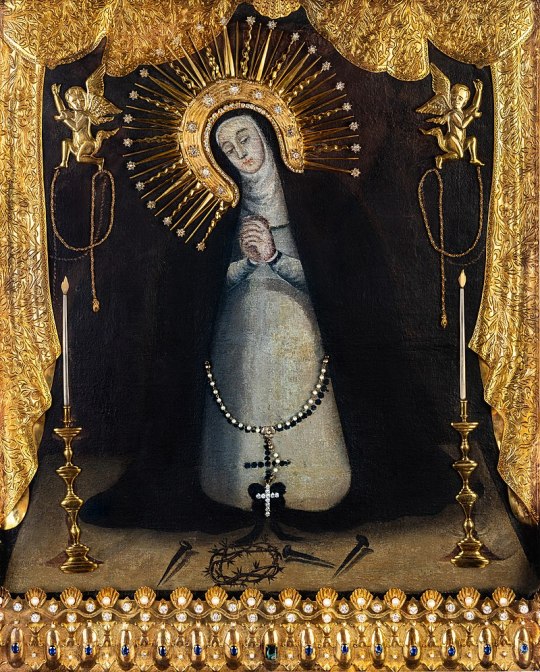


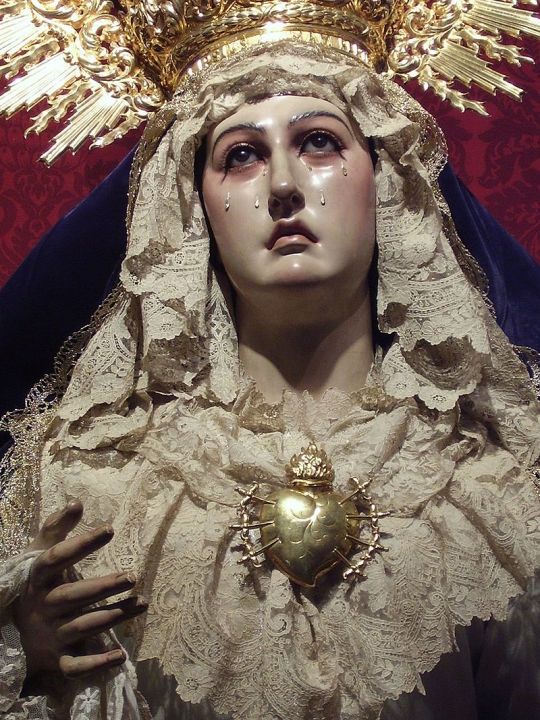
Our Lady of Sorrows (Latin: Beata Maria Virgo Perdolens), Our Lady of Dolours, the Sorrowful Mother or Mother of Sorrows (Latin: Mater Dolorosa), and Our Lady of Piety, Our Lady of the Seven Sorrows or Our Lady of the Seven Dolours are names by which the Virgin Mary is referred to in relation to sorrows in life. As Mater Dolorosa, it is also a key subject for Marian art in the Catholic Church.
The Seven Sorrows of Mary are a popular Roman Catholic devotion. In common religious Catholic imagery, the Virgin Mary is portrayed, sorrowful and in tears, with one or seven long knives or daggers piercing her heart, often bleeding. Devotional prayers that consist of meditation began to elaborate on her Seven Sorrows based on the prophecy of Simeon. Common examples of piety under this title are Servite rosary or the Chaplet of the Seven Sorrows of Our Lady, the Seven Joys of Mary, and, more recently, Sorrowful and Immaculate Heart of Mary.
O most holy Virgin, Mother of our Lord Jesus Christ: by the overwhelming grief you experienced when you witnessed the martyrdom, the crucifixion, and death of your divine Son, look upon me with eyes of compassion, and awaken in my heart a tender commiseration for those sufferings, as well as a sincere detestation of my sins, in order that being disengaged from all undue affection for the passing joys of this earth, I may sigh after the eternal Jerusalem, and that henceforward all my thoughts and all my actions may be directed towards this one most desirable object. Honor, glory, and love to our divine Lord Jesus, and to the holy and immaculate Mother of God. Amen.
190 notes
·
View notes
Text
Saint of the Day - 15 September - Our Sorrowful Mother Mary - The Seven Sorrows
Saint of the Day – 15 September – Our Sorrowful Mother Mary – The Seven Sorrows
Saint of the Day – 15 September – Our Sorrowful Mother Mary –
The Seven Sorrows of the Blessed Virgin MaryAlso known as:• Septem Dolorum.• Beata Maria Virgo Perdolens• Beata Vergine Addolorata• Dolorosa• Maria Santissima Addolorata• Mater Dolorosa• Mother of Sorrows• Our Lady of the Seven Dolours• Our Lady of the Seven Sorrows• Sorrowful Mother
The Seven Sorrows of Mary
The Prophecy of Simeon…

View On WordPress
7 notes
·
View notes
Text
okay, continuing the journey we started in this post, where we left off with the demon children of lilith
i now present to you the saga of joseph and mary, in three parts, which bring us to the end of prometheus (2012)
Part IV. The Fool’s Journey Through the Sperm Donation Clinic, or: I hate Charlie Holloway and He Should Have Suffered More Before He Died
Part V. Our Lady of Sorrows (Latin: Beata Maria Virgo Perdolens), Our Lady of Dolours, the Sorrowful Mother or Mother of Sorrows (Latin: Mater Dolorosa), and Our Lady of Piety, Our Lady of the Seven Sorrows or Our Lady of the Seven Dolours are names by which the Virgin Mary is referred to in relation to sorrows in her life.
Part VI. Ph'nglui mglw'nafh Cthulhu R'lyeh wgah'nagl fhtagn.
Part IV. The Fool’s Journey Through the Sperm Donation Clinic, or: I hate Charlie Holloway and He Should Have Suffered More Before He Died
in Part I-III i established my theories on how the contaminant effected the sacrificial engineer, the proto-facehuggers, and Fifield. now let’s further examine Exhibit B to get to the more basic mechanics of the First Xenomorph’s evolution
a fingertip of contaminant diluted in alcohol + charlie holloway = zombie charlie
that is a full branch of one evolution, from start to finish. contaminant in vase, taken to the UCSS Prometheus, transferred from David’s fingertip to Charlie’s drink, Charlie started to get sick, Charlie was midsommar/hereditary-d
what’s more interesting is the branch off of this path wherein Charlie served as a vector species to bring the contaminant to Dr. Elizabeth Shaw (but that’s Part V)
charlie was poisoned directly, but was exposed to a much smaller amount of contaminant than fifield, so his transformation took longer
we see the morning after Prometheus lands on LV-223 that holloway looks in the mirror and sees something silvery worming its way out from his tear duct before slipping back inside his eye
honestly i could argue that this is less a contaminant life cycle stage and more of a cool visual in a space horror movie, but, let’s not take it as such
instead, let’s note that the earth worms became proto-facehuggers by transforming into Dick Cobras and keep in mind what i said in Part III: that the contaminant adapts itself to its environment through a shared collective memory
charlie’s drink was poisoned at the same time that Fifield and Milburn were lost in the caverns overnight despite fifield not only designing and engineering the pups that mapped the entire structure but also having a live 3d map of the entire thing literally strapped to his arm it’s fine i’m not bitter we can just say he was high i guess and that millburn was stupid
from all those miles away, that tiny little speck of contaminant became to work inside of charlie to do what that giant pool of contaminant did to fifield
it (the sample) knew how it (the collective consciousness) had transformed those worms into something slithering and deadly, so it became something slithering and deadly inside charlie
it (the sample) learned that it (the collective consciousness) enveloped fifield whole and turned him into a monster, so it started doing the same thing to charlie from the inside out
Part V. Our Lady of Sorrows (Latin: Beata Maria Virgo Perdolens), Our Lady of Dolours, the Sorrowful Mother or Mother of Sorrows (Latin: Mater Dolorosa), and Our Lady of Piety, Our Lady of the Seven Sorrows or Our Lady of the Seven Dolours are names by which the Virgin Mary is referred to in relation to sorrows in her life.
this is hard to type out because thinking about Shaw for too long makes me go banana nut brazy but i will limit myself, in this specific post, to talking about her as a xenomorph progenitor
as i promised in our intro, i’m here to talk about how charlie holloway served as a vector species to bring the contaminant to Dr Elizabeth Shaw
the mechanics of this are important to note because the dilution that happened here (exposure to the atmosphere, minuscule dosage, passage through vector species) allowed elizabeth shaw to nurture death and bear it as a squalling babe
so: david poisons charlie, charlie inseminates elizabeth, elizabeth becomes pregnant with an alien fetus which develops to a third of its maturity within a matter of hours
in mammalian pregnancy, as proven in lab rats and extrapolated to human subjects, the fetus is a parasite
anyone who knows anything about pregnancy and the resulting complications could tell you this, but the fetus inside elizabeth starts killing her pretty graphically
even as she stumbles to vicker’s chambers to use the bypass surgery pod, the thing is ripping through her insides. it was never meant to gestate. to mutate, certainly. to corrupt. but to grow? to develop? that has never been its way.
every act of creation the contaminant has performed from its inception has been an act of destruction (see Part I-III). Doctor Elizabeth Shaw did the impossible.
but, of course, the creature was not of woman born!! it was, paradoxically, illogically, alive when it was from its mother’s womb untimely ripp’d!!
to return to our equation:
contaminant + exposure to atmosphere + vector species + elizabeth shaw = The First Facehugger
Part VI. Ph'nglui mglw'nafh Cthulhu R'lyeh wgah'nagl fhtagn.
okay, here is where my two key points become the most relevant: that the contaminant has a collective consciousness where it can learn from its vector and host species, and that the contaminant is Death
by becoming (Becoming, if you will) rather than destroying, creating rather than subsuming, the contaminant changes the core essence of itself
it has taken apart many things, and so been many things, and now it has been born
why did Elizabeth’s baby take the form of a giant squid? because it looked tight as shit
but if you look at the little pulsating mouth-suckers on its underbelly you’ll see that they look quite a bit like the Dick Cobra’s secondary faces
maybe the First Facehugger actually resembled some sort of animal the Engineers had on their planet, but most likely the SFX team was given a task to make something slimy that looked like a facehugger but not quite and that’s what they did
personally i fucking love the big baby i think her character design and performance are both utterly stunning
the Final Engineer comes on board Vicker’s pod to kill Shaw, he fails, and is instead enveloped by the First Facehugger. she sticks her proboscis/ovipositor down his throat and he dies
this further supports my theory that Dick Cobras are proto-facehuggers AND the monarch butterfly theory because the way she killed the Final Engineer was just like how they killed Milburn, and the appendage she used to do it looked like them as well
then, very simply, we have an equation that looks like this:
First Facehugger + Final Engineer = First Xenomorph
of course the facehugger would have learned about birth and gestation from having experienced it herself. and of course the birth she would give to her own child would look like the one she had experienced. violent. cruel. forced.
the design for the baby xeno sucked major ass tbh i hate its stupid little goblin shark mouth i hate that it’s like... teal? and i hate how smooth it is. many many thumbs down, especially after how beautiful its mama was.
but there you have it, the First Xeno is the final step in an evolution of distilled Death becoming a very different kind of harbinger, one focused on its own perpetuation and the complete and total annihilation of everything else
the contaminant learned about birth and so built itself a process that would facilitate further death. it made itself a creature that begins and ends in death, and pulls all in its wake down with it
a xenomorph is a perfect organism, its structural perfection matched only by its hostility. a xenomorph is death that exists only to breed. death made to breed? death carried through perpetual breeding. a hive species of death. idk i’m workshopping the final sentence on this one, but that’s my spiel.
stay tuned for all my Covenant xeno-biology theories!!!!!
13 notes
·
View notes
Text
Magdalene by FKA Twigs, a review.
undefined
youtube
I’ve been learning some shit from women from as long as I’ve been alive. Always some other shit that I never asked for but I got told it. I used to treat them things they said as laws as a child, but I never saw them in a book, so then I stopped believing them. They were always hushed laws though, laws told with squinted eyes and italicized whispers, laws told when no one else was around.
I mean, now of course men make the real laws that we know and live by. Well come on now, we write them on parchment, and display them on lights, we code them into computers, inscribe them on coins and stone. But these women…man women tell you some other shit, like glue shit, in low, muttered tones in the quiet part of the house. Like advice on… well not how the world works, but how to deal with the world when it works against you, and how to make it work for you. But you see, I’ve come to believe that the fairer sex tells you different laws than the vaunted laws and advice of our fathers because they all around see the world differently than men do. They may, in fact, have been harbouring different goals than us all along.
I mean for christssakes us men have our hero’s journey as clear as day, writ large and indelible across history books and entertainment. You could take that Joseph Campbell mono-myth theory and see it expressed in Arthurian swash-buckle, the middle earth ring-slaying of Tolkien, or in the recently concluded tri-trilogy of Star Wars galactic clashes. We’re in the empire business, as Breaking Bad’s Walter White infamously said. But still, the question always lingered to me: what is the heroine’s journey? Is it really just a lady in a knight’s armour? Or some tough-as-nails spy for some interloping government’s intelligence agency, delivering kidney kicks in a designer pencil skirt?
Well, I’ve come to believe that the heroine’s journey is navigating the waves of history we imperial and trans-national men make from our railroads and pipelines, our satellites and wars, them at once preserving a culture and sparking a path and creating a bond between cultures in order for them and their (il)legitimate brood to survive. That old chestnut about how behind every successful man is a woman always unnerved me by its easy adoption. I kept thinking ‘bout that woman. I kept thinking, what the fuck was she thinking?

You see women’s heroes, they ain’t as clear as day to me. They don’t kill the dragon, they don’t save the townspeople, they don’t shoot the Sherriff, or the deputy, or anyone most times. When I ask people in public at my job what super power they would like, most men go for strength, flight, and regenerative abilities (my pick). Most women went with mind reading and flight. In late night conversations though, with the moonlight coming through the white blinds and resting soft on us like so, I sometimes manage to hear that women’s heroes heal and clean the sick of the nation, in sneakers with heels as round as a childhood eraser; they feed a family with one fish and five slices of wonder bread; they would run gambling spots in the back of their house, putting the needle back on the Commodores record and patrolling the perimeter of the smoked-out room with a black .45 nested by their love handles; they climb up flag poles and speak out loud in public for the disposed and teach children those unwritten, floating laws while cloistered in the quiet part of the house.
Although their heroines are sometimes from the top strata of society –a Pharaoh here, an Eleanor Roosevelt there, an Oprah over there—they also name a healthy mix of radicals and weirdos with modest music success, people like Susan B. Anthony, Frida Kahlo, Virginia Woolf, or Nikki Giovanni, I mean did Nina Simone or Janis Joplin even crack the Billboard top ten? Yet there they are, up on the walls of a thousand college dorms across the country. So even though I couldn’t’ve foreseen it, it makes sense that of all the ultra-natural creatures, of all the great conquering kings and divining prophets of the Holy Bible, Mary Magdalene ends up the spirit animal for the album of the year for 2019.
Mary Magdalene was a follower of Jewish Rabbi Jesus during the first century, according to the four Gospels of the New Testament of the Bible, a figure who was present for his miracles, his crucifixion and was the first to witness him after his resurrection. From Pope Gregory I in the sixth century to Pope Paul VI in 1969, the Roman Catholic Church portrayed her as a prostitute, a sinful woman who had seven demons exorcised from her. Medieval legends of the thirteenth century describe her as a wealthy woman who went to France and performed miracles, while in the apocryphal text The Gospel of Mary, translated in the mid-twentieth century, she is Jesus’ most trusted disciple who teaches the other apostles of the savior’s private philosophies.
Due to this range of description from varying figures in society, she gets portrayed in differing ways, by all types of women, each finding a part of Magdalene to explain themselves through. Barbra Hershey, in the first half of Scorsese’s The Last Temptation of Christ (1988) plays her as a firm and mysterious guide, a rebellious older cousin almost, while Yvonne Elliman, in Norman Jewison’s 1973 film adaptation of Lloyd Weber’s Jesus Christ Superstar is lovelorn and tender throughout, a proud witness of the Word being written for the first time. In “Mary Magdalene,” FKA Twigs, the Birmingham UK alt-soul singer, describes the woman as a “creature of desire”, and she talks about possessing a “sacred geometry,” and later on in the song she tells us of “a nurturing breath that could stroke you/ divine confidence, a woman’s war, unoccupied history.” Her vocals that sound glassy and spectral in the solemn echoes of the acapella first third, co-produced by Benny Blanco, turn sensual and emotive when the blocky groove kicks in. That groove comes into its own on the Nicolas Jaar produced back third, and when this all is adorned with plucked arpeggios it sounds like an autumnal sister to the wintry prowl of Bjork’s “Hidden Place” from her still excellent Vespertine (2001).
This blending of the affairs of the body and of Christian theology is found in the moody “Holy Terrain” as well. While it is too hermetic and subdued to have been an effective single, it still works really well as an album track. In this arena, Future is not the hopped up king of the club, but a vulnerable star, with shaded eyes and a heart wrapped up in love and chemicals, sending his girl to church with drug money to pay tithes. Over a domesticated trap beat he shows a vulnerable bond that can exist, wailing his sins and his devotion like a tipsy boyfriend does in the middle of a party, or perhaps like John the Baptist did, during one of his frenzied sermons, possessed and wailing “if you pray for me I know you play for keeps, calling my name, calling my name/ taking the feeling of promethazine away.”
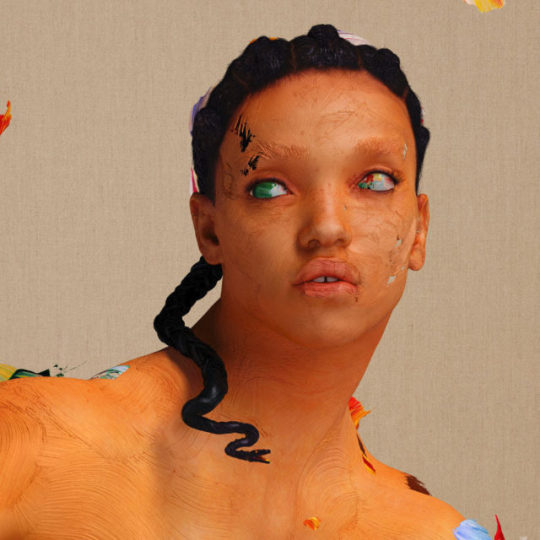
Magdalene, the singer’s sophomore release, takes the mysterious power and resonance of this biblical anti-heroine, and involves its songs with her, these emotional, multi-textured songs about fame, pain and the break up with movie star boyfriend Robert Pattinson. With “Sad Day,” Twigs sings with a delicate yet emotional yearning, imbued with a Kate Bush domesticity. The synth pads are a pulsing murmur, and the vocal samples are chopped and rendered into lonely, twisting figures. The drums crash in only every once in a while, just enough to reset the tension and carve out an electronic groove, while the rest of the thing is an exercise in mood and restraint, the production by twigs, Jaar and Blanco, along with Cashmere Cat and Skrillex, leaves her laments cosseted in a floating sound, distant yet dense and tumultuous, the way approaching storm clouds can feel. Meanwhile “Thousand Eyes” is a choir of Twigs, some voices cluttered and glittering, some others echoed and filled with dolour. “If you walk away it starts a thousand eyes,” she sings, the line starting off as pleading advice and by the close of the song ending up a warning in reverb, the vintage synths and updated DAWs used to create these sparse, aural haunts where the choral of shes and the digital ghosts of memory can echo around her whispered confessional.
In many of these divorce albums, the other party’s role in the conflict is laid bare in scathing terms: the wife that “didn’t have to use the son of mine, to keep me in line” from Marvin Gaye’s Here My Dear from 1979; the players who “only love you when they’re playin’” as Stevie Nicks sang on Fleetwood Macs Rumours (1977); or as Beyonce’s Lemonade (2017) charges, the husband that needs “to call Becky with the good hair.” At first though, Twigs is diplomatic, like in “Home with me,” where she lays the conflict on both sides here, expressing the rigours of fame, the miscommunication –accidental or intentional –that fracture relationships, and the violent, tenuous silence of a house where one of the members is in some another country doing god knows what, physically or mentally. “I didn’t know you were lonely, if you’d just told me I’d be home with you,” she sings in the chorus over a lonely piano, while the verse sections have the piano chords flanked by blocks of glitch, and littered with flitched-off synths. Then, the last chorus swirls the words again, along with the strings and horns and everything into a rising crescendo of regret.
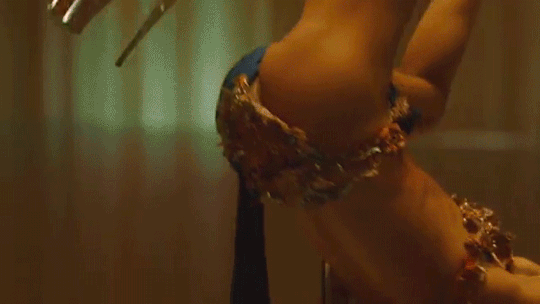
Later in the album however, her anger once smoldering is set alight, in the dramatic highlight “Fallen Alien.” Twigs sings with an increasing tension, as her agile voice morphs from confused, pouting girlfriend to towering lady of the manor, launching imprecations towards a past lover and perhaps fame itself. “I was waiting for you, on the outside, don’t tell me what you want ‘cuz I know you lie,” she sings, and, after the tension ratchets up becomes “when the lights are on, I know you, see you’re grey from all the lies you tell,” and then later on we have her sneering out loud “now hold me close, so tender, when you fall asleep I’ll kick you down.” All while pondering pianos drop like rain from an awning, tick-tocking mini-snares and skittering noises flit across the beat like summer insects, the kicks of which are like an insistent, inquisitive knocking at the door, and then there’s that sample, filtered into an incandescent flame, crackling an I FEEL THE LIGHTNING BLAST! all over the song like the arc of a Tesla coil. The song is a shocking rebuke, and it becomes apparent upon replays that the songs are sequenced to lead up to and away from it, the gravitational weight giving a shape and pace to the whole album. Because of this, the other songs on Magdalene have more tempered, subtle electronic hues and tones, as if the seductive future soul of 2013s “Water Me” from EP2, and the inventive, booming experimentation of “Glass & Patron” from 2015s M3LL1SSX, were pursed back and restrained until it was needed most, and this results in an album more accomplished, nuanced and focused than her impressive but inconsistent debut LP1 (reviewed here).
This technique of electronic restraint has shown up in the most recent albums by experimental pioneers, with the sparse, mournful tension of Radiohead’s A Moon Shaped Pool (2017), it’s cold, analog synths and digital embellishments cresting on the periphery of the song, and with Wilco’s Ode to Joy from last year, an album bereft of their lauded static and electric scrawl, mostly embossed in acoustic solitude and brittle, wintery guitar licks. Twigs and her co-producers take the same knack for the most part throughout the album, like with closer “Cellophane,” where the dramatic voice and piano are in the forefront, while effects crunch lightly in the background like static electricity in a stretched sweater, and elsewhere, as the synths of “Daybed” slowly intensify into a sparkling soundscape, as if manufacturing an awakening sunrise through a bedroom window. And it is this seamless melding of organic and electronic instruments, to express these wretched and fleeting emotions of heartbreak that makes this the album of the year.
It makes sense that an artist like FKA Twigs would be drawn to a figure like Mary Magdalene. Of the many Marys in the New Testament, she stuck out as palpably different, or rather, she depicted a differing part of womanhood than the other two. She wasn’t the chaste, life-giving mother of Jesus, or the dutiful Mary of Clopas. Instead, Magdalene was this mixture of sexuality and spirituality, one of those figures that managed to know men and women in equal measure, wrapped up with the blood as well as the flesh. Twigs also played with this enrapturing sexuality in her work, writhing around in bed begging some papi to pacify her and fuck her while she stared at the sun, then making you identify with the lamentations of video girls, and then telling you in two weeks you won’t even recognize who you were seeing before. There was something mysterious and layered to her millennial art-chick sexpot act though, layers that have begun to be revealed with this album.

We realise now, that what she was depicting all along was more like the sexual heat that lays underneath devotion, as opposed to fleeting, mayfly lust, and that she now understands the weight and half-life of love. That is, that beyond the sex and patron and fame there is a near sacred love we build between each other for a while in time, lasting as long as both hands can bear to hold it, and also that the death of a relationship still has the memory of the love created warm within it that then radiates off slow into the air. A love that then falls into our minds for safekeeping dark and unobstructed now, the way Jesus’ blood fell from his wound into Joseph of Arimathea’s grail held aloft.
“I never met a hero like me in a sci-fi,” FKA Twigs sings, an evocative line less so for the hegemonic patriarchy of the worldwide movie and comic book industry suggested by ‘the sci-fi’ here, and more for the ‘hero like me’ part, which suggests she had to make her hero origin story all up, without the scaffolding of centuries of relatable mythologies, presenting us with an avatar of millennial love, in all of its tortured luster. And you hear this type of love in her voice, no longer changed up and ran through a filter for Future Soul sophistication most times, but out in the open now, to express particular emotions, whether it’s in that swooping, falling ‘I’ in the heart-break closer “Cellophane,” or her assured realisation, later on “Home With Me” where she says “But I’d save a life if I thought it belonged to you/ Mary Magdalene would never let her loved ones down.”
undefined
youtube
It’s never about how to conquer with these women you see. In the end of all relationships it’s how they find their way out after us temporarily embarrassed conquerors are about to leave, jacket slung over shoulder, standing by the door. You squint your eyes back at her this time, and you listen this time, while she tells you, or tells the ground in front of you, what parts of love to let go of, and what parts are worth holding on to in this age of Satan, the parts that will help you become yourself. “I wonder if you think that I could never help you fly,” the song tells you then, one of those stinging admissions that only women come up with, and you wisely stay silent, and then the piano chords part, the synths subside. And for a while there as she looks at you, as the breathy sortilege in the song keeps going, it all sounds like something worth believing in again. And then, the words she says to you start to come across like laws.
#music#music review#rnb#rnb music#r&b#soul#future soul#future pop#alt soul#electronica#fka twigs#magdalene#mary magdalene#cellophane#Long Reads#sad day#hiro murai#new music
21 notes
·
View notes
Photo
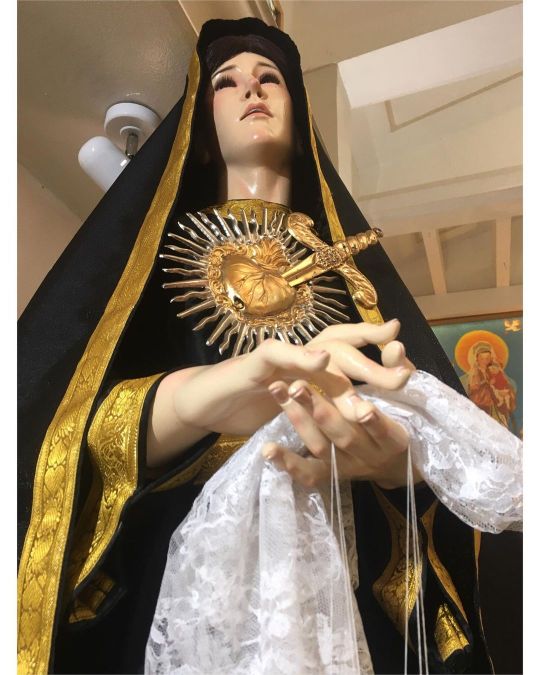
#FolkloreThursday: Part 1/3: Memorial of Our Lady of Sorrows (September 15) Our Lady of Sorrows (Latin: Beata Maria Virgo Perdolens), Our Lady of Dolours, the Sorrowful Mother or Mother of Sorrows (Latin: Mater Dolorosa), and Our Lady of Piety, Our Lady of the Seven Sorrows or Our Lady of the Seven Dolours are names by which Mary, mother of Jesus, is referred to in relation to sorrows in life. As Mater Dolorosa, it is also a key subject for Marian art in the Catholic Church. The Seven Sorrows of Mary are a popular religious theme and a Roman Catholic devotion. In Christian imagery, the Virgin Mary is portrayed sorrowful and in tears, with one or seven swords piercing her heart, iconography based on the prophecy of Simeon in Luke 2:34–35. Pius practices in reference to this title include the Chaplet of the Seven Sorrows, the Seven Principal Dolors of the Blessed Virgin, the Novena in Honor of the Seven Sorrows of Mary, and the Via Matris. The feast of Our Lady of Sorrows is liturgically celebrated every 15 September yearly, while a feast, the Friday of Sorrows is observed in some Catholic countries. Earlier, in 1232, seven youths in Tuscany founded the Servite Order (also known as the "Servite Friars", or the "Order of the Servants of Mary"). #folklorethursday #mamamary #mothermary #ourladyofsorrows #holymother #catholique #catholiques #romancatholic #romancatholicchurch #catholicmystics #catholicworld #intothemystic #catholic #catholicism #materdolorosa #Spiritique #mindfulness #Spiritual #Spirituality #mystical #mystique #mystic #mysticisim #renaissance #renaissanceart #folk #folklore #folkspirits #folkmystic (at St. Jude Thaddeus Parish - Legazpi City, Albay) https://www.instagram.com/p/Cih8Y3ipHGa/?igshid=NGJjMDIxMWI=
#folklorethursday#mamamary#mothermary#ourladyofsorrows#holymother#catholique#catholiques#romancatholic#romancatholicchurch#catholicmystics#catholicworld#intothemystic#catholic#catholicism#materdolorosa#spiritique#mindfulness#spiritual#spirituality#mystical#mystique#mystic#mysticisim#renaissance#renaissanceart#folk#folklore#folkspirits#folkmystic
0 notes
Text

In the first ages, during the night before every feast, a vigil was kept.
In the evening, the faithful assembled in the place or church where the feast was to be celebrated and prepared themselves by prayers, readings from Holy Writ (now the Offices of Vespers and Matins), and sometimes also by hearing a sermon.
On such occasions, as in fast days in general, Mass also was celebrated in the evening, before the Vespers of the following day.
Towards morning, the people dispersed to the streets and houses near the church to wait for the solemn services of the forenoon.
This vigil was a regular institution of Christian life. It was defended and highly recommended by St. Augustine and St. Jerome (see Pleithner, "Aeltere Geschichte des Breviergebetes", pp. 223 sq.).
The morning intermission gave rise to grave abuses — people caroused and danced in the streets and halls around the church (Durandus, "Rat. Div. off.", VI, 7).
St. Jerome speaks of these improprieties (Epist. ad Ripuarium).
The Synod of Seligenstadt (1022) mentions vigils on the eves of Christmas, Epiphany, feast of the Apostles, Assumption of Mary, St. Laurence, and All Saints, besides the fast of two weeks before the Nativity of St. John.
After the eleventh century, the fast, Office, and Mass of the nocturnal vigil were transferred to the day before the feast.
Even now [1909], the liturgy of the Holy Saturday (vigil of Easter) shows, in all its parts, that originally it was not kept on the morning of Saturday but during Easter Night.
The day before the feast was henceforth called vigil.
A similar celebration before the high feast also exists in the Orthodox (Greek) Church. It is called pannychis or hagrypnia.
In the Occident, only the older feasts have vigils.
Even the feasts of the first class introduced after the thirteenth century (Corpus Christi, the Sacred Heart) have no vigils, except the Immaculate Conception, which Pope Leo XIII (Nov. 30 1879) singled out for this distinction.
The number of vigils in the Roman Calendar besides Holy Saturday is seventeen: the eves of Christmas, the Epiphany, the Ascension, Pentecost, the Immaculate Conception, the Assumption, the eight feasts of the Apostles, St. John the Baptist, St. Laurence, and All Saints.
Some dioceses and religious orders have particular vigils: the Servites, on the Saturday next before the feast of the Seven Dolours of Our Lady; the Carmelites, on the eve of the feast of Mount Carmel.
In the United States, only four of theses vigils are feast days: the vigils of Christmas, Pentecost, the Assumption, and All Saints.
0 notes